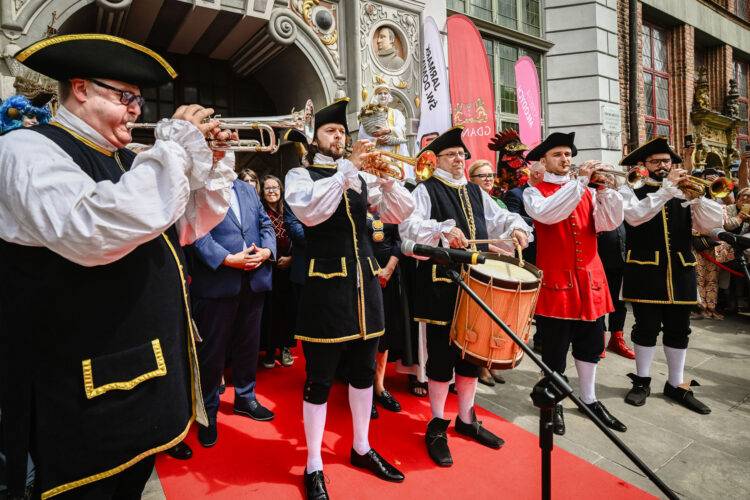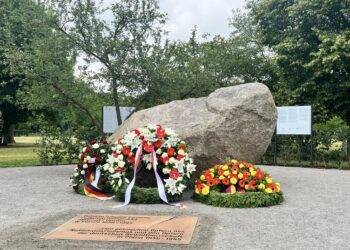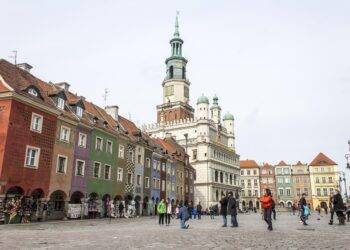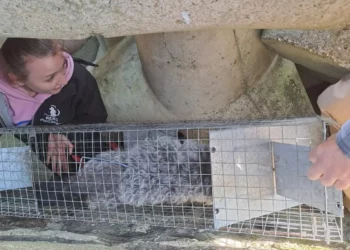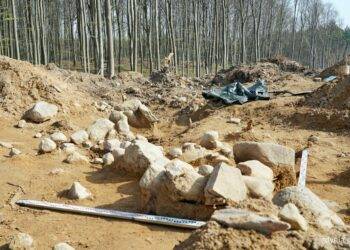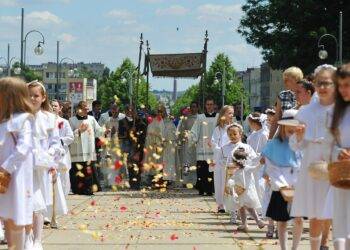Gdańsk, a picturesque port city on the Baltic coast of Poland, has long been renowned for its rich history and vibrant culture. Among the city’s most cherished traditions is the Jarmark Dominikański (St. Dominic’s Fair), a grand fair that dates back centuries and continues to enchant locals and visitors alike. The origins of this remarkable event can be traced back to the Middle Ages, when Gdańsk was a flourishing hub of international trade. The fair, which is named after the Dominican Order whose monastery once stood nearby, was initially established as a market to foster economic exchanges between merchants from different parts of Europe. It lasts around 3 weeks and usually starts towards the end of July/beginning of August. It was founded in 1260 and together with Weihnachtmarkt and Oktoberfest, it is considered one of the biggest cultural and trade open-air events in Europe attended by 5-8 million national and international visitors annually.
- More News from Poland on our Homepage.
- Sign up to our Newsletter to receive a weekly recap and stay informed about current events in Poland
- Don’t forget to follow us on Facebook.
In its early years, Jarmark Dominikański played a pivotal role in shaping Gdańsk’s identity as a prominent trading center. Merchants from Scandinavia, Western Europe, and beyond would converge upon the city to showcase their wares, ranging from exotic spices and textiles to precious metals and artworks. The event provided a unique platform for cultural exchange, as visitors brought with them not only goods but also customs, languages, and traditions. Over time, the fair evolved into a multifaceted celebration of commerce, art, and community spirit, becoming an integral part of Gdańsk’s social fabric.
Jarmark Dominikański Through the Ages
As the centuries passed, Jarmark Dominikański grew in both scale and significance. During the Renaissance era, the fair gained even more prominence, attracting scholars, artists, and intellectuals who convened to share knowledge and ideas. This influx of intellectual activity contributed to the flourishing of arts and sciences in Gdańsk, leaving an indelible mark on the city’s cultural landscape. Notably, it was during this time that the fair introduced its famous open-air theater performances, featuring plays and musical acts that captivated audiences from all walks of life.
The fair faced its share of challenges over the centuries, including interruptions caused by wars, economic fluctuations, and political upheavals. Nevertheless, the resilience of Gdańsk’s inhabitants and their unwavering commitment to preserving their cultural heritage ensured that Jarmark Dominikański continued to thrive. In the late 19th and early 20th centuries, the fair embraced a more modern character, with industrial exhibitions and technological displays reflecting the changing times. However, it remained firmly rooted in tradition, retaining its medieval charm and fostering a sense of continuity with the past.
The Contemporary Jarmark Dominikański
Today, Jarmark Dominikański stands as a testament to Gdańsk’s enduring legacy as a city of commerce, culture, and unity. The fair, which takes place annually over several weeks during the summer, draws in hundreds of thousands of attendees from across Poland and beyond. Its extensive program of events encompasses a wide array of activities, from artisanal markets and folk music performances to contemporary art exhibitions and gastronomic delights. The fairgrounds, now located in the heart of the Old Town, come alive with a bustling atmosphere as people stroll through the narrow streets, exploring the myriad stalls and attractions.
As the organizers declare, approximately 5 million people come and go through the Old Town of Gdańsk during each St. Dominic’s Fair (in 2007 there were as many as 8.5 million of them which is still a record)
One of the highlights of the modern Jarmark Dominikański is the “International Amber Fair,” showcasing the city’s long-standing association with amber, often referred to as “Baltic Gold.” Amber traders and craftsmen gather to display their exquisite creations, ranging from jewelry to intricate sculptures, all crafted from this precious gemstone. Visitors can immerse themselves in the rich history and symbolism of amber, as well as witness live demonstrations of amber carving techniques passed down through generations.
Preserving Tradition for Future Generations
As the world undergoes rapid changes, the preservation of traditions like Jarmark Dominikański becomes all the more vital. The fair serves as a living link between the past and the present, offering an invaluable opportunity to appreciate the cultural heritage that has shaped Gdańsk’s identity over the centuries. Furthermore, Jarmark Dominikański has also adapted to the contemporary context, embracing sustainable practices and fostering an inclusive environment to engage younger generations.
In recent years, educational initiatives have been integrated into the fair’s program, with workshops, seminars, and interactive exhibits aimed at enlightening visitors about the historical significance of the event and the city’s broader heritage. The emphasis on cultural education ensures that future generations will continue to cherish and safeguard the legacy of Jarmark Dominikański, perpetuating its relevance and ensuring its continuation for many more centuries to come.
Jarmark Dominikański stands as a living testament to Gdańsk’s vibrant history and cultural diversity. From its medieval origins as a bustling marketplace to its contemporary incarnation as a multi-dimensional extravaganza, the fair has consistently embodied the spirit of this remarkable city. As the event continues to evolve, embracing the challenges of the modern world while remaining rooted in tradition, Jarmark Dominikański remains a symbol of unity, heritage, and celebration, enchanting all who experience its magic.
- Thank you for reading the article – we’re glad you are with us.
- Follow us on Facebook and Twitter to stay up to date with News from Poland.
- For the most beautiful pictures of Poland – follow us on Instagram.

